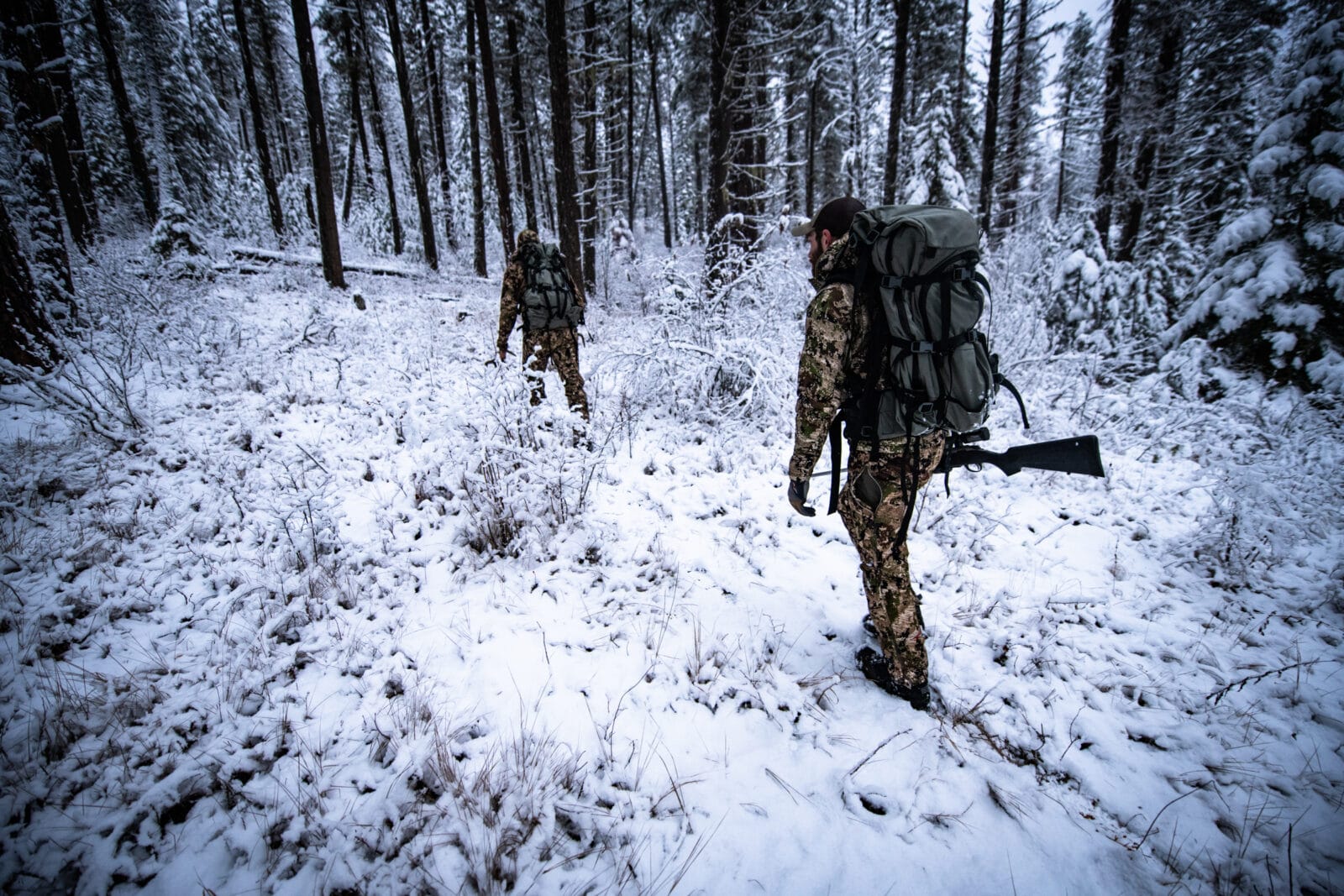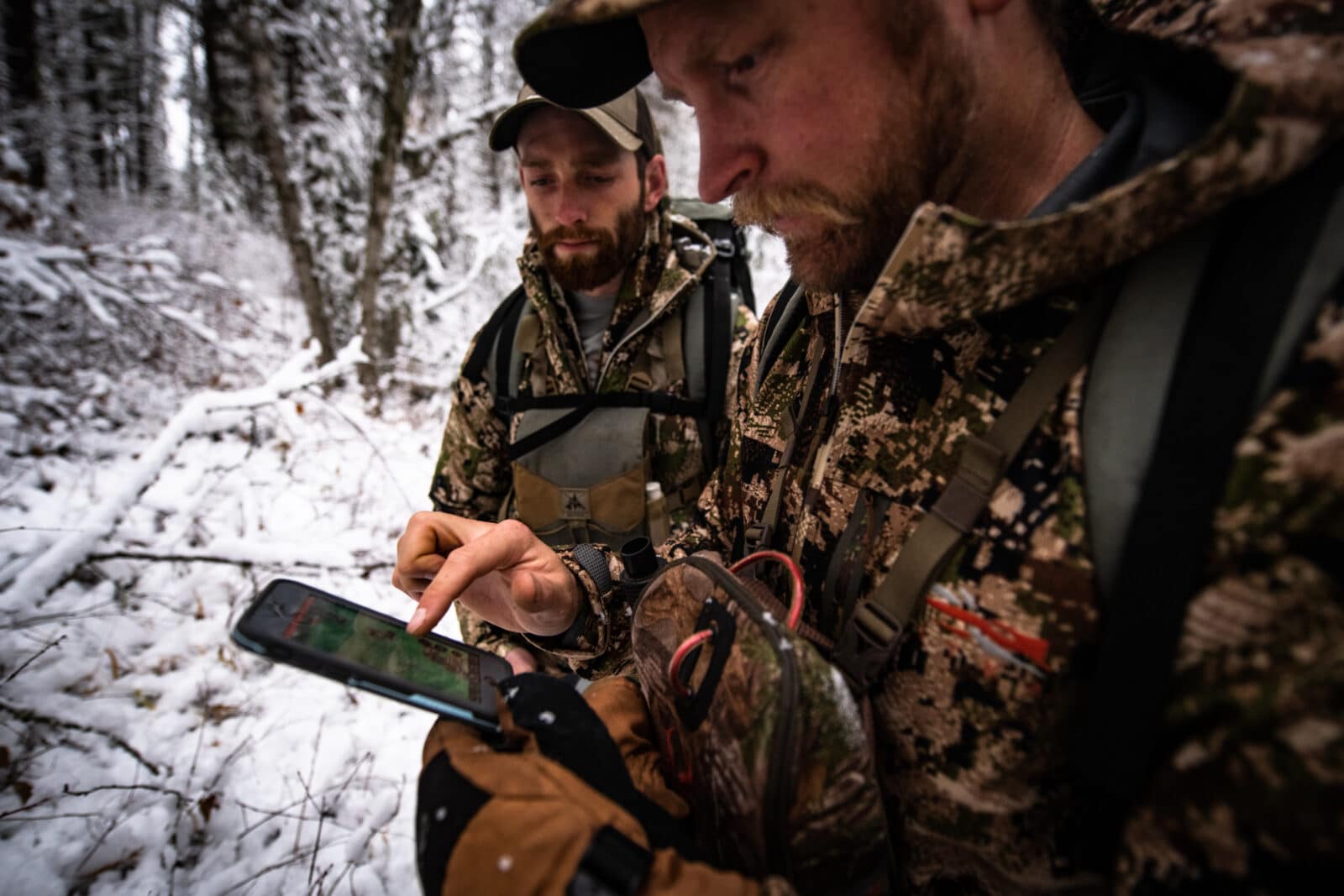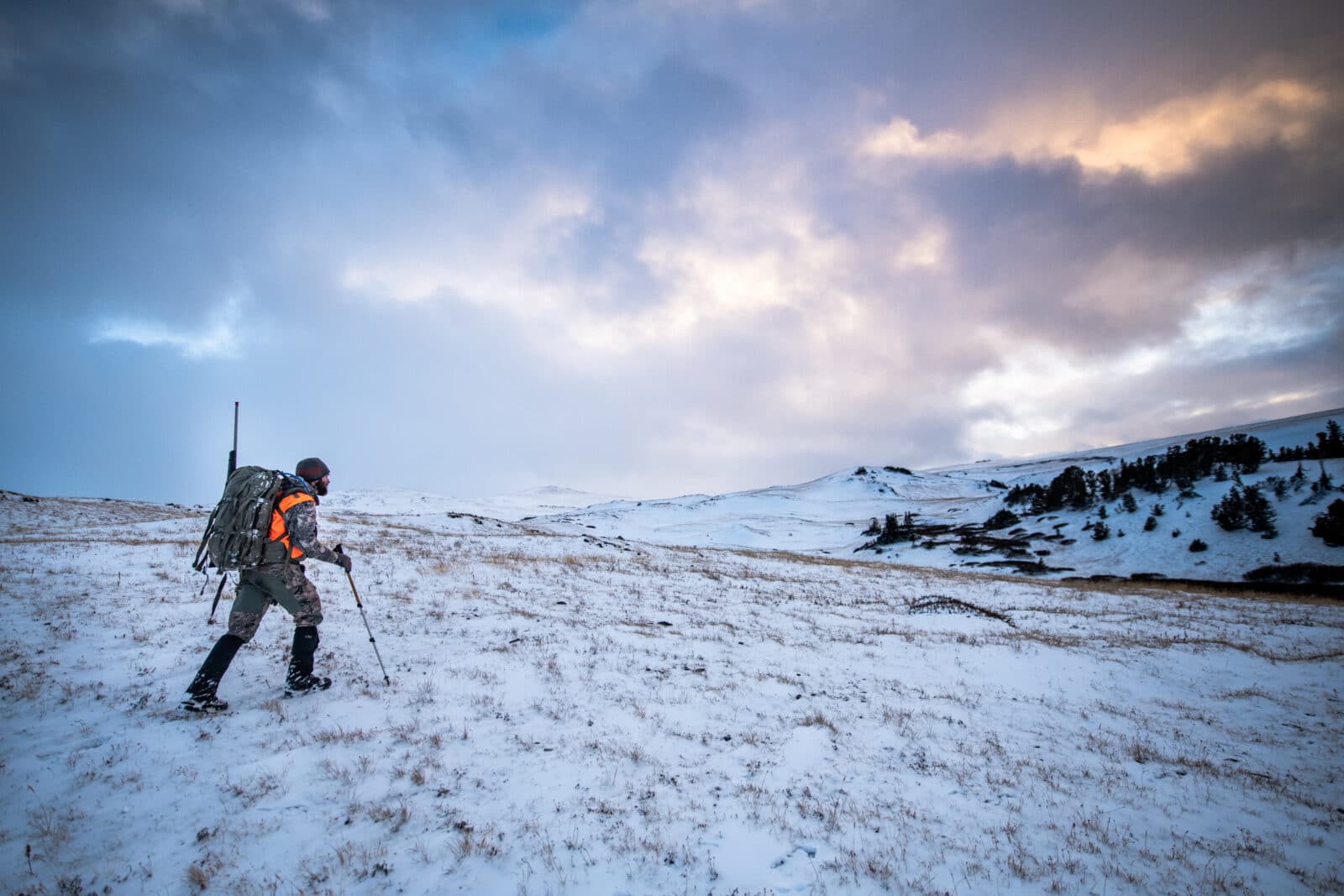Once the leaves start to drop, fall can get busy. Between family functions and trying to squeeze every hunt in I can, the calendar can start to fill up fast. You tell yourself it’s “the last time at the cabin” or “one more hour on the lake”, and the weekends can start to get away from you. As I write this, I am currently two weeks out from my seven-day backcountry Colorado elk hunt, and all I have to show is a tag and a whole bunch of questions.
But just because you haven’t been training at the gym for six months and studying plat maps, doesn’t mean you can’t still find success. Whether you are a professional procrastinator, or time has just gotten away from you this season, here are a few tips to help with planning your backcountry hunt when you are short on time.
If you don’t have a tag yet, there are plenty of states where you can get over-the-counter tags. Be sure to check out the onX Hunt Blog for articles like You Didn’t Draw a Tag, Now What? Over-the-Counter Hunting Opportunities in the West by Huntin’ Fool. You can also use state agency websites to find last-minute opportunities as a nonresident. Don’t discount the cow/calf or doe/fawn options. They can have just as much adventure, but lighter on your wallet and often have more leftover and OTC tags available. For the sake of time, we are going to assume you already have your tag, but just haven’t started preparing yet.

Last-Minute Hunting on a Budget
Cost is the biggest limiting factor in a race against the clock. With unlimited financial resources, you can afford last-minute hotel reservations and ship gear overnight. Most of us don’t have that luxury. It’s important to set your budget early, so you can prioritize how it is spent. Deduct the large expenses before reviewing the remaining “variable budget.” You know you have already bought the tag, most of the gear you are going to need, and weapon of choice. The variable budget should be left for those costs with some wiggle room.
If your budget is $1,000, and you spend close to $700 on a rifle tag, you will be forced to consider some thrifty lodging, travel, and food options. If better amenities are a priority for you, then you may want to consider a cheaper tag. Whatever is going to make you enjoy your hunt the most is how you should prioritize your budget.
Late-Season Scouting for Last-Minute Success
The next sections all have one common theme: more time spent before the hunt will save time and anxiety in the woods. Scouting before your hunt is crucial, especially if you have put off planning for your trip. Animals need food, water, and cover, and will prioritize them differently depending on what time of the year. The trick is to e-scout a few locations that have those three key elements and make those the locations to check out in person. If possible, schedule an extra day before you start hunting to just scout the area. Using one day just for scouting can lead to a better Plan A, Plan B, and Plan C once you have a gun or bow in hand.
Pick locations that are accessible to you physically. Being a Midwest flatlander with only minor physical preparation, I know I won’t be able to handle heavy elevation changes and high altitudes for seven days. Any physical preparation can only help you. Jog around the block or hike trails a few times before the hunt. Use onX’s Line Tools and 3D maps to view topography and elevation change in the area you plan to hunt. It can be difficult to pick a single spot on public land you’ve never been to. E-Scouting will help you limit the areas you plan to check out once you put boots on the ground. onX has compiled some resources to show you how to e-scout for different species and time of year.

Travel and Lodging for Your Hunt
Travel and lodging are the areas where you can spend the most time and money. Carpool as much as possible. It cuts down the cost of gas and adds an extra driver and copilot when driving through the night. It’s also worth the cost to take a larger vehicle or add a pull-behind trailer. Sacrifice some gas mileage for comfort and space to haul gear. A more spacious vehicle can also double as your lodging if you decide to pull off at a rest stop for the night. This saves on having to make a hotel reservation, and your legs will thank you for the room.
As far as lodging during the hunt, it’s personal preference. If it is early enough in the season, I try to camp, so lodging is free and usually doesn’t require reservations. Be sure to check the federal and state land camping regulations in the state you plan to hunt. Some states allow camping on state land, while others do not.
Later in the season, I would still plan to camp, but suggest having a backup plan. Call ahead to check availability at hotels, motels, and Airbnbs on your drive out to have an idea of what is available. Even a single night with a bed and a shower can do wonders for your morale on a multiple-day hunt.
Budgeting for Food
Food is another place where a little preparation goes a long way. If you have time to prepare a few meals before the hunt, it can allow for more time in the mountains. If you don’t have time to meal prep, do a grocery run before heading to camp. You don’t want to have to leave the hunt to go back to town for food or firewood. Dehydrated meals are fast and easy to purchase ahead of time, but can be expensive. If you choose that route, make sure to search a few stores ahead of time. Options and inventory might be limited this time of year.
- Pre-Hunt: I will bring sandwich materials (bagels, meat, cheese, PB&J, condiments, etc.) for the drive out. You can make a sandwich and save on the gas station gut rot, plus you can make a lunch for your days in the field. Pro tip: bagels are more filling than bread and hold up better in a cooler for a week.
- Mid-Hunt: Bring a couple of plastic Tupperware containers to help protect your lunch inside your pack. You can also fill up any extra space in that container with trail mix, jerky, granola bars, or some oranges for a quick snack. Tuna or salmon packets are also super lightweight, filling options to throw in your pack.
- Post-Hunt: At night, I will eat my largest meal and regain calories lost during the day. Save your dehydrated meals for those evenings. If you are going to go back to a basecamp for the night, divide up nights for everyone to prepare one or two meals ahead of time to be reheated. Pastas, hotdish/casseroles, and soup/chili are warm, dense meals that are easy to reheat quickly and can stack into the cooler easy to transport on your drive out.

Gearing Up for a Last-Minute Hunt
I get it, it’s fun to add new hunting gear and tweak your kit. But the phrase “If it ain’t broke, don’t fix it” comes to mind. You don’t need the latest and greatest to be successful. Use the gear you are comfortable with and you know already works. There is a short list of items that you actually need to hunt, and you probably already have them. When you are short on time, focus on physical conditioning and shooting your gun or bow before worrying about last-minute gear changes.
For a great checklist, check out Rocky Mountain Elk Foundations Gear lists. Make sure you remember the little things: headlamps, first aid kit, knives, and toilet paper are easy things to pack or pick up along the way, but will be sorely missed if you forget them.
- Clothing: There are a lot of good brands that make great clothing and support conservation. Do your research. But it all boils down to layering. Make sure to have a baselayer that goes next-to-skin and wicks moisture away, an insulating midlayer that can be shed to dump mid-day, and an outer layer that is windproof or waterproof. Merino wool and synthetic materials both have their pros and cons, but try to stay away from cotton. Extra layers can be added in for added comfort, but those are the three basics you will not want to skip.
- Bow/Arrows or Gun/Ammo: This is the whole reason you’re taking the trip, and you want to ensure a clean, ethical kill. It should be the most dialed in piece of your gear. If you are shooting a gun, make sure you can find plenty of ammo. Plan to shoot that same grain on the range as in the field and shoot as much as possible. Also, be sure to take a few shots once you get to the hunt location if you change elevation. You may need to make a few small adjustments to compensate.
- Boots: Nothing can ruin a hunt faster than cold or wet feet. If you bought new hunting boots, walk a few miles a day in them before the hunt to make sure they are broken in. This can also help with your own physical preparation. Make sure you hike a few trails and dewy fields around home and condition or silicone spray for added water resistance if needed. Also, bring a backup pair in case of emergencies.
- Optics: Good optics can save a lot of time and boot leather on a backcountry hunt. If you have not had time to scout an area, binoculars and spotting scopes will help locate animals and identify terrain features that you wouldn’t anticipate with the naked eye. A rangefinder is handy to range terrain features to use as reference points once your target steps into view. Most optics can be split amongst your group. Divide up who is bringing what to save on pack weights.
- Backpack: Try to find a hunting pack that fits your torso and how you like to carry it. You will want something lightweight, but durable enough to pack out your gear and meat if things turn out the way we hope. I good pack can be an investment but should last you for years if you take care of it. I use a Mystery Ranch Metcalf. This has been a good size for multiple days in the backcountry, and is versatile enough to take whitetail hunting, turkey hunting, and on backpacking day hikes.
- Camping Gear (If applicable): Camping takes the least amount of planning ahead when you are pressed for time. Make sure you have a good tent, sleeping bag, sleeping pad, or cot (your back will thank you after seven days), and plan to use your layering system and pack a pillow. Refer to the earlier gear list for other camping essentials.
Hopefully reading this, you have stopped panicking about not being prepared for your hunt. Remember, it’s supposed to be fun, so allow yourself to enjoy the preparation as part of the process. Spend time shooting, e-scouting, and getting in a little better physical conditioning. Lay out a few items as you think of them throughout the day or write them down to pack when you get home. Use a spare room or garage as a staging area, and then spend a few hours trimming it down to the essentials before you leave. If you are in a rush and think you’ll forget something, it’s better to have things you don’t need than need things you don’t have. Overpack if you have the room, and you can lighten your pack once you get to your basecamp.
Cheers to light winds and heavy packs!